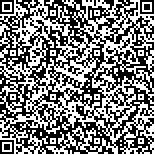下载中心
优秀审稿专家
优秀论文
相关链接
摘要

地表温度LST(Land Surface Temperature)是全球气候变化研究的关键参数,遥感是获取全球和区域尺度地表温度的一种切实可行手段,但现有的单一传感器无法提供高时空分辨率的LST数据,限制了遥感地表温度数据的深入广泛应用。现有的降尺度方法难以生成无缝高时空分辨率的地表温度数据,且降尺度效果易受高空间分辨率LST数据缺失及有效时刻分布影响。本文提出了一种基于地表温度日变化模型DTC(Diurnal Temperature Cycle)偏差系数解算的地表温度降尺度方法,采用FY-4A、MODIS和Landsat 8的LST数据生成晴空及多云条件下逐小时100 m的无缝LST数据。方法主要包含4部分:(1)利用空值重建方法获取无缝的FY-4A的LST数据;(2)建立FY-4A LST数据的DTC模型;(3)采用时空融合模型对MODIS的LST数据进行空间降尺度;(4)解算DTC模型偏差系数,获取逐小时100 m分辨率的无缝LST数据。实验结果表明,本文提出的方法具有较高的降尺度精度,可获得晴空及多云条件下无缝高时空地表温度数据,且高空间分辨率的地表温度数据缺失和有效时刻分布对本文方法降尺度结果影响较小。
Land Surface Temperature (LST) is a key parameter in global climate change research. Remote sensing is a practical means of obtaining surface temperature at global and regional scales, However, the existing single sensor cannot provide LST data with high spatial and temporal resolution, which limits the wide application of LST data obtained by remote sensing. The present downscaling methods are difficult to generate seamless LST data with high spatial and temporal resolution, and the downscaling effect is easily affected by the effective time distribution of LST data with high spatial resolution.In this paper, a land surface temperature downscaling method based on Diurnal Temperature Cycle (DTC)model deviation coefficient calculation is proposed.The LST data from FY-4A, MODIS and Landsat 8 are used to generate the seamless LST data of 100 meters per hour under clear skies and cloudy conditions.The proposed method mainly consists of four parts : (1) the seamless FY-4A LST data are obtained by using DTC model and LST reconstruction method considering spatial and temporal characteristics. (2) Establish the DTC model of FY-4A LST data. (3) The MODIS dataset are extended and then combined with the enhanced spatiotemporal adaptive reflectance fusion model (ESTARFM) to generate LST data of 100 meters at multiple moments every day. (4) Calculate the deviation coefficient of DTC model to obtain seamless LST data with a resolution of 100 meters per hour.Compared with the observation data of three stations, the results showed that: (1) the proposed method in this paper had higher accuracy compared with the ESTARFM model and its average RMSE had been reduced 0.63 K. MAE of the three stations was all less than 3 K, RMSE range was 2.01 K to 3.22 K, and the correlation coefficients r were all higher than 0.98. (2) the proposed method to extend LST data with medium spatial resolution was simple and effective. Compared with the MODIS product accuracy at the transit time (RMSE: 1.14 K to 5.53 K), LST data at the extended time all had higher accuracy (RMSE: 0.90 K to 3.57 K). (3)The method in this paper can generate more complete high resolution LST data set in space and time. On the one hand, it was less affected by high resolution images of missing values, based on the reconstruction of only low spatial resolution LST datasets, seamless and high spatial resolution LST datasets can be generated under clear sky and cloudy conditions. On the other hand, the effective time distribution of high spatial resolution images has little influence on the method in this paper, and the reconstruction results have high stability.In this paper, a land surface temperature downscaling method based on DTC model deviation coefficient calculation is proposed.The method was evaluated by observed datum of three stations and real remote sensing images. The results showed that the proposed method has higher accuracy and can obtain seamless high temporal and spatial LST data under clear sky and cloudy conditions. Moreover, the lack of high spatial resolution LST data and the effective time distribution have less impact on the proposed method. Because the proposed method in this paper is based on the DTC model, it is not applicable to the surface temperature downscaling under rainy weather conditions, which should should be investigated in future studies.

